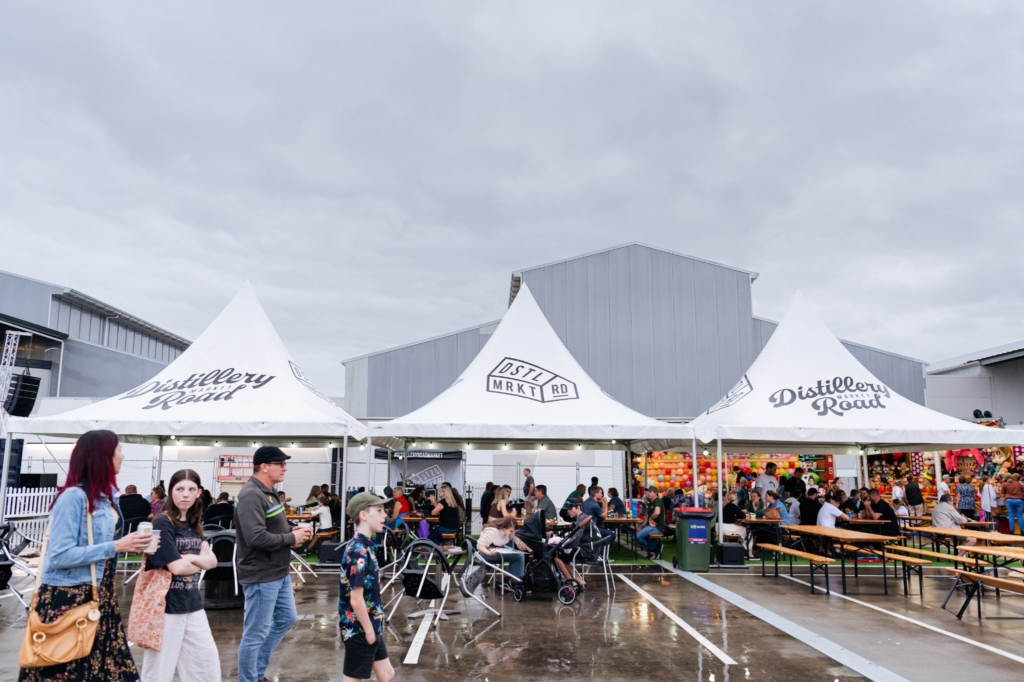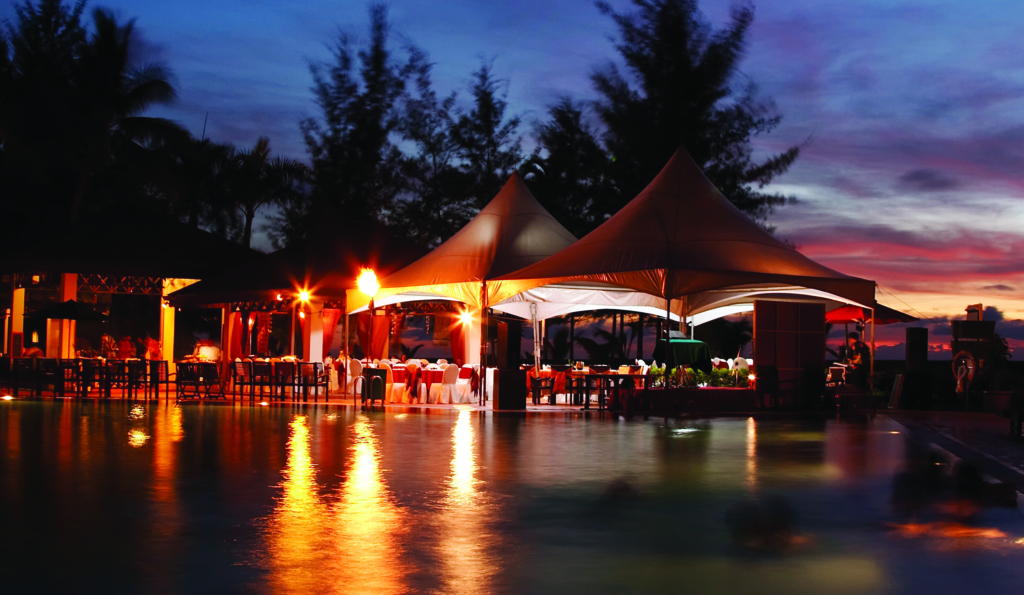When to Upgrade and Replace Your Event Tent
Are you using an event tent that has seen better days? It may be time for an upgrade or replacement. A faulty or run-down tent isn’t just an eye-sore, it can also be a pain to set-up and pose a serious safety risk. If you are wondering whether it’s time to upgrade or replace your event tent, this is the guide for you. Read on for detailed information on tent lifespans, different types of tent damage, tent repair and replacement options, tent preservation tips and more—all from our trusted tent manufactures here at Extreme Canopy: the professionals that know tents better than anyone else.
What is the Lifespan of a Typical Event Tent?
Event tent lifespans vary based on tent type, usage, and environmental factors. As a general rule, a well-made event tent that is properly taken care of and used seasonally will last 10 or more years with no significant issues. “Seasonal” use is typically defined as use during only the warmer months: late spring, summer and early fall. Tents used year-round will likely endure more wear and tear, and thus deteriorate more rapidly. Most damage occurs during set-up and tear-down, which is why it’s important to work carefully when setting a tent up and packing it away. Even then, some degree of deterioration is unavoidable. Inclement weather also reduces a tent’s lifespan. Rain, snow and wind can contribute to corrosion, tearing and other damages that render a tent unusable over time.
What are Some of the Signs of Tent Damage?
Event tents can be damaged by a number of environmental factors, including people, weather and even other event equipment. Here are some of the most common signs of tent damage, their causes, and how to prevent them.
- Pin Holes. Tents made from vinyl are subject to pin holes, which are tiny perforations caused when vinyl interacts with sharp objects. Pin holes most commonly occur when tents are rolled or carried across the ground, where small rocks and rough terrain can cause micro-punctures in a tent’s vinyl surface. Pin holes can be easily spotted when a tent is installed, as they let in small dots of light on a tent’s walls and roof. These small points of light are particularly noticeable on blackout vinyl materials, which are designed to block out light. (Tip: To help prevent pin holes, use a drop cloth during installation—when pin holes typically occur—to create a barrier between your tent and the ground.)
- Scrim Mold. All vinyl tents with printing are made from a material known as scrim vinyl, or simply “scrim” for short. Used in both coated and laminated PVC vinyl, scrim is a polyethylene substrate, woven and reinforced with polyester cording. Integrated into the vinyl during manufacturing, this multi-layer weave greatly enhances the tensile strength of the material. Unfortunately, pin holes and other tears in the multi-layer scrim weave can lead scrim mold, an insidious type of mold that occurs when moisture penetrates the scrim layer. Scrim mold can be identified by discoloration in vinyl material or the reduction of light in translucent vinyl. Scrim mold is virtually impossible to remove once it has set in, so if your tent is facing an outbreak, it may be time to consider a replacement. (Tip: The biggest steps to preventing scrim mold are preventing perforation and reducing moisture. Use a drop cloth during installation and always dry your tent off during tear-down.)
- Rust and Tearing. General damage in the form of rust and tearing are perhaps the most common problems that affect event tents. Tears can occur due to misuse, accidents with event guests, and interactions with the environment. Though a tear or two won’t be devastating to a tent’s overall function, a number of tears can greatly reduce the weather-proof functionality and aesthetic appeal of any tent. Rust, on the other hand, is a problem that can affect both a tent’s functionality and its structural integrity. Rust occurs when iron and oxygen are exposed to moisture, a process that can degrade certain metals such as steel. (Tip: To prevent rust on your event tent, always ensure that your frame is wiped clean of moisture before packing your tent up. Buying a new tent? Galvanized steel frames are a good option, but aluminum frames are the best choice as they are truly rust-resistant.)
Can Event Tents be Repaired?
The short answer is yes, tents can be repaired. However, tent repairs are often costly and impractical, making replacement the better choice. If tent damage is isolated to a single component, such as a side wall or anchor, these components can often be replaced without users having to replace the entire tent. Spot repairs can be made for tears in fabric, but pin holes and scrim mold are virtually impossible to fix without replacement. Rust is also very difficult to reverse, so if you are looking to take care of rust on your tent’s frame, you’ll likely have to replace the frame component or the entire tent. With other issues, it’s a good idea to assess on a case-by-case basis and choose the most practical, cost-effective and safe option for your tent and its users.
Keeping Your Event Tent in Great Condition: Maintenance and Purchasing Recommendations
As only certain components of a tent can be repaired at costs lower than an entire replacement, repairs are best left avoided whenever possible. Whether you have recently purchased a new tent or you are simply trying to keep your existing tent in great condition, there are a number of steps you can take to prevent repairs and protect your investment. Use these maintenance and purchasing recommendations to ensure that your event tent lasts as long as possible.
- Reduce moisture. As the culprit behind scrim mold, rusting and corrosion, moisture is a true enemy of event tents. Reducing moisture by drying off your tent and covering it up between use will greatly reduce the chance of water damage. This is especially true for tents with frames made of steel or galvanized steel, which is subject to corrosion when not covered between uses.
- Use a drop cloth. A drop cloth is a layer of cloth placed between a tent and the ground during installation. Drop cloths prevent the tent from picking up dirt and moisture, which can lead to mold. Drop cloths also serve as a protective barrier between a tent and any sharp objects on the ground, thus preventing pin holes, tears and other perforations.
- Choose aluminum. Today’s most durable event tents are made from either galvanized steel or aluminum. While both metals are strong and resistant to weathering, aluminum is the only one that is truly rust-proof. Though the galvanizing process applied to galvanized steel can ward off corrosion and rust to an extent, small damages to the surface can eventually let in moisture and begin the corrosion process. For optimal durability, aluminum is the right choice.
- Invest in add-ons. The durability and functionality of an event tent can be greatly improved with additional hardware and accessories. Add-ons such as extra siding, roofing and gutters can help reduce damage from moisture and inclement weather. High-quality stakes, anchors and wheels can also improve stability and mobility, making tents easier to use and helping them last longer.
- Take your time with set-up and tear-down. In the rush and excitement of an event, it can be tempting to hurry through tent set-up and tear-down. However, these moments are when most tent damages occur, so slowing down and taking your time will pay dividends in preserving your tent. During set-up and tear-down, be sure to remove all potential hazards from your area before moving your tent. Don’t use excessive force on tent frames or fabrics, and always take care to keep your equipment clean. Lastly, don’t be afraid to ask for help. An extra set of hands can go a long way in ensuring that set-up and tear-down are completed without a hitch.
When to Order a New Tent
Even with an understanding of the various types of tent issues, it can be difficult to tell when to call it quits with a damaged or faulty tent. After all, some issues are purely aesthetic, while others may hinder a tent’s performance only slightly. In many cases, small repairs or continued careful use is the right course of action. But when safety is compromised and functionality is greatly reduced, tent replacement is the clear choice. If you are wondering whether to replace your event tent, you’ll find that many of today’s top tent manufacturers offer high-quality event tents engineered to last a lifetime. Though replacing an event tent may be a big investment in the moment, it’s one that will pay for itself over time when a top-notch tent is purchased. With this in mind, tent replacement is often the right choice for event hosts, businesses, sports teams and other organizations.
Learn More and Shop High-Quality, Custom Tents at Extreme Canopy
Want to learn more about when to replace your event tent? Ready to invest in a brand-new event tent for your needs? Contact our experts at Extreme Canopy for friendly and knowledgeable tent-related advice, and shop our industry-leading inventory to find a high-quality, custom tent from our trusted manufacturers today!


